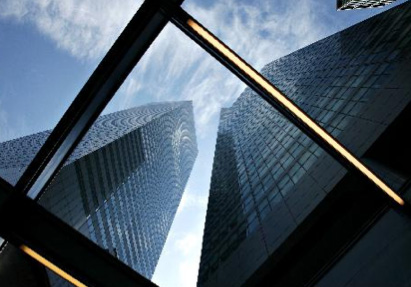With many employees planning to keep working from home for the foreseeable future, big corporate tenants in city centers say they have a surplus of office space. Most of those companies are locked into long leases of as long as 20 years and have little opportunity to get out of these agreements.
That is leading companies from Airbnb Inc. and Twitter Inc. in San Francisco to Expedia Group in Austin, Texas, to try to unload their overflow by subletting unwanted office space.
Corporate tenants put a record 42 million square feet of space on the office market in the second and third quarters, according to data firm CoStar Group Inc. That increased the total sublease space in the U.S. to roughly 157 million square feet, or 1.7% of the total office inventory. It is the highest rate since CoStar began measuring it in 2005.
New reports of a vaccine trial proving better than expected at protecting people from Covid-19, the illness caused by the new coronavirus, helped unleash a huge Monday rally in office and other real-estate stocks, easing some of the most dire concerns for the sector.
But some still fear the overhang is likely going to get worse before it gets better, especially with the recent rise in Covid-19 cases and as more employers view work from home as an alternative even after the coronavirus pandemic comes under control.
The office market has held up much better this year than lodging or retail real estate. Hotel guests and conference organizers canceled trips and events after the pandemic hit. Many retail tenants have withheld rent. But most office tenants have been paying. Average office asking rents have barely fallen this year, according to Ian Anderson, senior research director of CBRE Group Inc.
Those metrics, however, mask how much supply is actually available after factoring in the tens of millions of square feet coming up for sublease. As more leases come up for renewal, the additional sublease supply is expected to pressure office rents, property analysts say.
It is made worse because corporate tenants are often more willing to offer their space at lower rents just to get some cash for it, said Jonathan Adelsberg, a partner and chair of the leasing department at law firm Herrick Feinstein LLP.
“There will be cases where tenants and landlords are going to be competing for the same business,” Mr. Adelsberg said.
The sublease discount historically has been around 20% below market rate, he added, “but given the plethora of space on the market today, we expect to see discounts greater than that.”
Office owners have largely made good on their debt payments during the pandemic. As of mid-October, only 2.5% of office mortgages that were converted into mortgage-backed securities were more than 30 days delinquent, said data firm Trepp LLC. That compares with rates of 14.3% for retail real estate and 19.4% for lodging.
But the office space starting to glut the market now could shave tens of billions of dollars of value off office buildings, creating big losses and the prospect of more defaults, analysts say.
“The heightened amount of sublease space suggests that tenants’ positions are more precarious than the vacancy rate would suggest right now,” said Nancy Muscatello, a CoStar senior analyst.
It isn’t unusual for businesses to put sublease space on the market during economic downturns. Companies typically contract or pull back from expansion plans only to resume their space consumption once recoveries begin.
Some brokers and landlords predict that office demand after the current recession and pandemic will follow a similar pattern. Douglas Linde, president of the big office owner Boston Properties Inc., said many tenants around San Francisco making office space available are in businesses such as retail and transportation that are “bearing the brunt” of the downturn.
“The bulk of sublease space is coming from the [Covid-19] recession and not a structural change in the way that people work,” he said.
But others say the current downturn looks different because of the mix of recession, pandemic, work-from-home and technological changes in the workplace. Businesses might be jettisoning space with no intention of leasing it back if they are adopting new workplace strategies.
The “unique factor” in this downturn is that “people are realizing that remote work is working better than they imagined and saying: ‘You know what? Let’s get rid of some of our space,’ ” said Mr. Anderson of CBRE.
Tech-heavy San Francisco has the largest sublease glut with 5.6% of its total office inventory available, according to CoStar. Austin, the Dallas-Fort Worth region and northern New Jersey across the river from Manhattan also had sublease surpluses of more than 2%.
Boston Properties owns office buildings in Boston, Los Angeles, San Francisco, Washington, D.C. and New York, including a 41-story Park Avenue tower where Maurice Greenberg’s C.V. Starr is putting close to 200,000 square feet of sublet space on the market. CV Starr is an insurance company with roots going back to a company formed in Shanghai. Mr. Greenberg formed American International Group in 1967 as a subsidiary of Starr.












